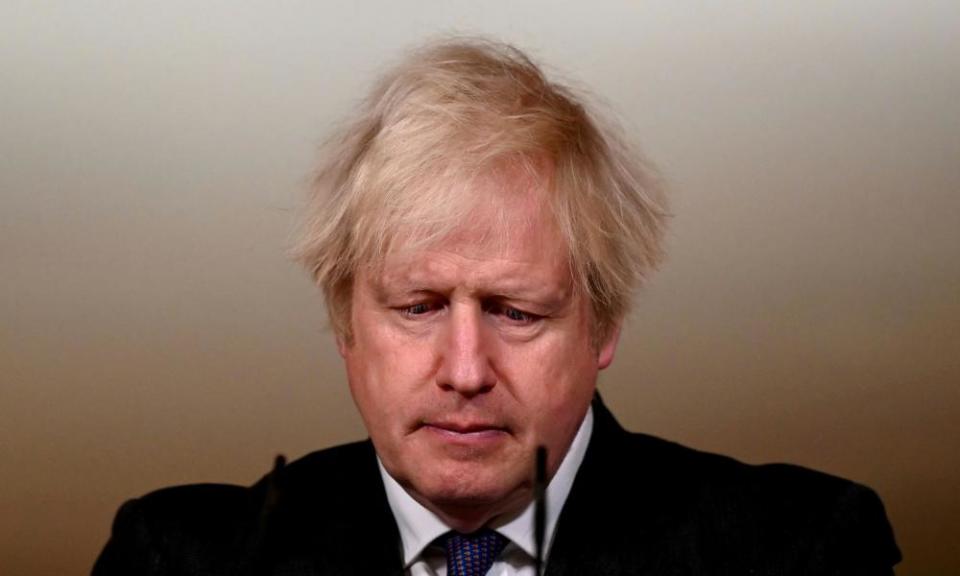Boris Johnson’s lockdown slip-up contradicts the official line

The news that the prime minister is looking at easing some restrictions by mid-February came as a surprise to many reporters – and to No 10.
The slip by Boris Johnson went against what insiders have been briefing for many weeks: that the easing of restrictions is a long way off and that this time there will be extreme caution.
“The one to four [most vulnerable] groups are going to be vaccinated by 15 February. Before then we will be looking at the potential of relaxing some measures,” he said.
Aides have underlined to reporters that Johnson’s comments were misinterpreted – “looking at” only means the government will be starting to make decisions, and that nothing will change before the 15 February review point. Less generously, it was a bit of a tongue twist from Johnson.
Government sources have underlined again and again that nothing will be eased until ministers are certain the vaccine programme is advanced enough to allow it. Put simply, they do not want to countenance the possibility of a fourth lockdown or to pull students back out of the classroom once they return. When England unlocks, it will be for good.
“All you will hear every day from any cabinet minister is caution,” one senior cabinet source says. “Every day journalists want to write a new story about unlocking. At the moment there is nothing to say.”
Johnson’s tone has markedly changed during this lockdown, with the prime minister far more willing to see off lockdown sceptics. It is not quite true that there are no plans at all – tentative roadmaps are being drawn up in Whitehall that would begin to ease restrictions in March, perhaps some sports or non-essential shops.
This time, the prime minister has made a public commitment that the first thing to reopen will be schools and he will face massive pressure from his backbenchers to make that so.
It is still possible that some pupils may return in a phased way after February half-term – Johnson was emphatic that journalists should “not assume” it will be Easter.
But all of those plans are very much in pencil – though it looks like this week will be critical to examine the direction of the data, as Gavin Williamson has promised schools will be given at least a fortnight’s notice.
There will be more and more pressure on Johnson, who likes to please, to set out the path. Conservative MPs are starting to clamour to see that roadmap – and the clamour will become a roar as the 15 February deadline approaches.
The ambition of “lockdown until there are no more lockdowns” is straightforward, but there are obvious threats. The most dangerous is that there is a new variant that is resistant to the current vaccine – either one that develops in the UK which remains a distinct possibility given the amount of virus still in circulation in the UK. Or it could be one imported from abroad.
Though scientists are confident that the current vaccines could be tweaked to provide protection against a new strain, it would significantly set back the jabs programme.
The fear of a new variant abroad is the key driver for the UK to re-examine its border policy – and why cabinet ministers such as Priti Patel and Matt Hancock are pushing for a blanket strategy of quarantining all travellers.
Rishi Sunak, who has been the driver behind many decisions to keep the economy as open as possible, is also in favour of a harder approach – though the chancellor wants to see a specific plan for how the hotel quarantine measures will end before he gives it his firm backing in the cabinet meeting on Tuesday.
The vaccination programme is the UK’s most precious asset. It is in the Treasury’s interests to also make sure the strategy of “the lockdown to end all lockdowns” works. There are many who will say this strategy comes a year too late.

 Yahoo Movies
Yahoo Movies 